HOME - Stream Routing
The physical connections are made via the device's network interface cards (NICs). The IP senders and receivers are either pre-defined according to the device configuration, or created manually using New Sender / New Receiver.
Depending on the device, up to four stream essence types are supported: video, audio, metadata and GPIO.
The easiest way to manage the connections is from HOME's 'Stream Routing' page. From here, you can connect a device's sender(s) to any receiver on the network. Or, connect any incoming stream to the device's receiver(s).
If a device supports audio streams, then the 'I/O Routing' (for the senders and receivers) can be used to map the audio channels carried by the streams to the device's local audio inputs and outputs.
Stream Routing (in HOME)
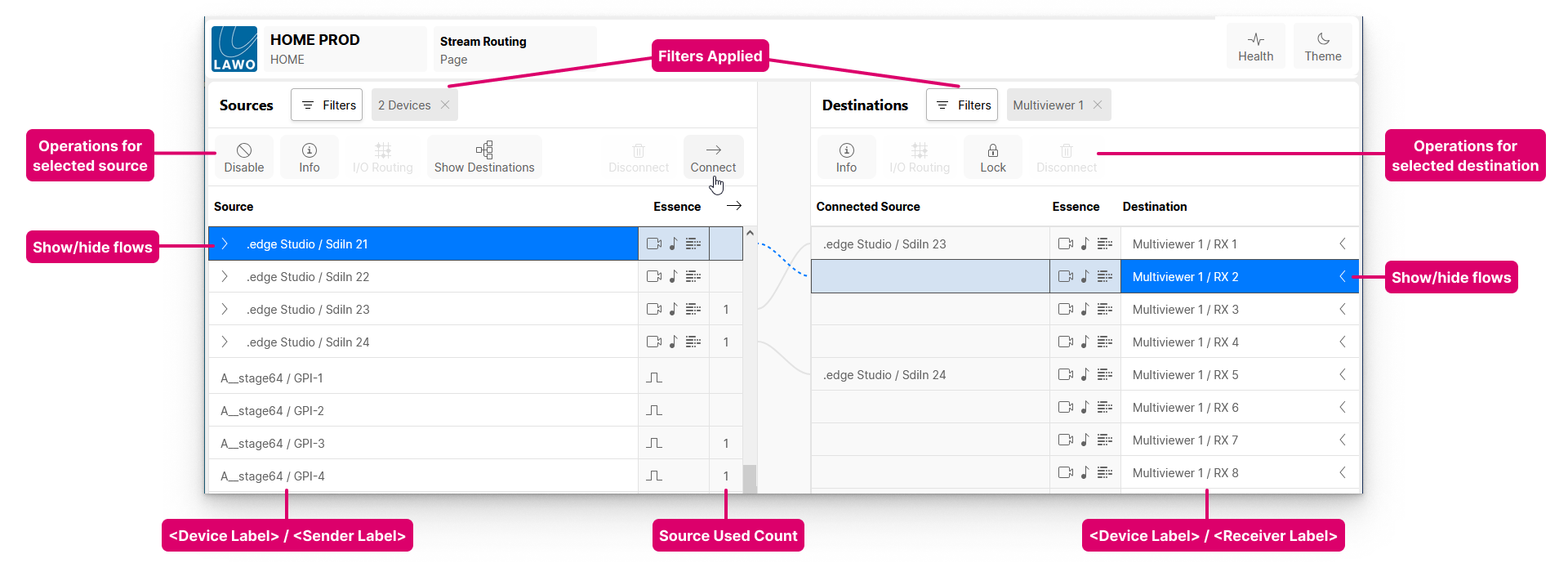
The page lists all available senders (on the left) and receivers (on the right).
- For each source and destination, there are two parts to the label: <device>/<sender> or <device>/<receiver>.
- The icons in the Essence column describe the type of flow: Video, Audio, Metadata and/or GPIO.
- If a source or destination handles more than one flow, then an arrow appears beside its label. Click on the arrow to show (or hide) the individual flows.
- Once a source is connected, a number appears in the "source used" column. This indicates the number of times the source is used. i.e. the number of connections made.
- Once a destination is connected, the "Connected Source" field shows the label of the connected stream.
The following operations are possible:
- Make or break connections - using Connect and Disconnect.
- Interrogate connections - using Show Destinations (for a sender) and the "Connected Source" field (for a receiver).
- Lock connections - using the Lock option (for a receiver).
- Disable sending streams - using Disable (for a sender).
- View (or edit) the stream configuration parameters - via the Info dialog (for a sender or receiver).
- View (or edit) the audio channel mappings - via the I/O Routing page (for a sender or receiver).
To make a connection, select a source (on the left) and a destination (on the right); then click on Connect.
- A dotted (preview) line appears when a connection is prepared.
- This changes to a solid line once the source(s) and destination(s) are connected.
Connections can be made between individual or groups of flows, and for multiple sources and destinations.
Apply a Filter
To restrict the view, you can apply one or more filters. For example, to view only the senders or receivers for a particular device or device type.
In the example below, the Sources list is filtered to show only the A__stage64 senders.
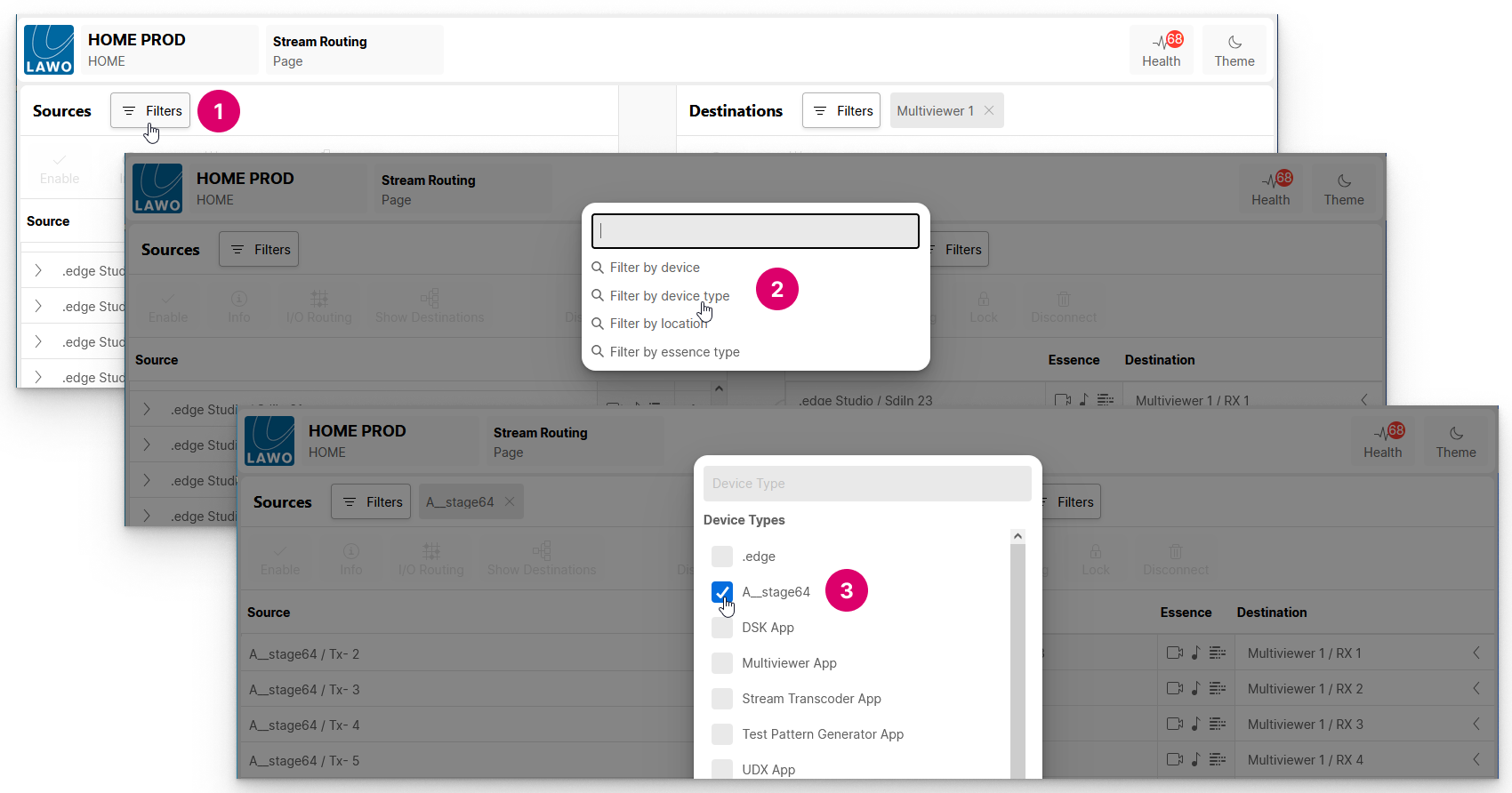
The resultant view (shown in the next section) makes it easy to connect the streams from this device to other receivers on the network.
Make (and Break) Connections
The Connect and Disconnect buttons are used to make and unmake the streaming connections.
Connecting a Sender to a Receiver
To make a connection, select a source and a destination - the selections are highlighted (in blue) and a dotted preview line appears.
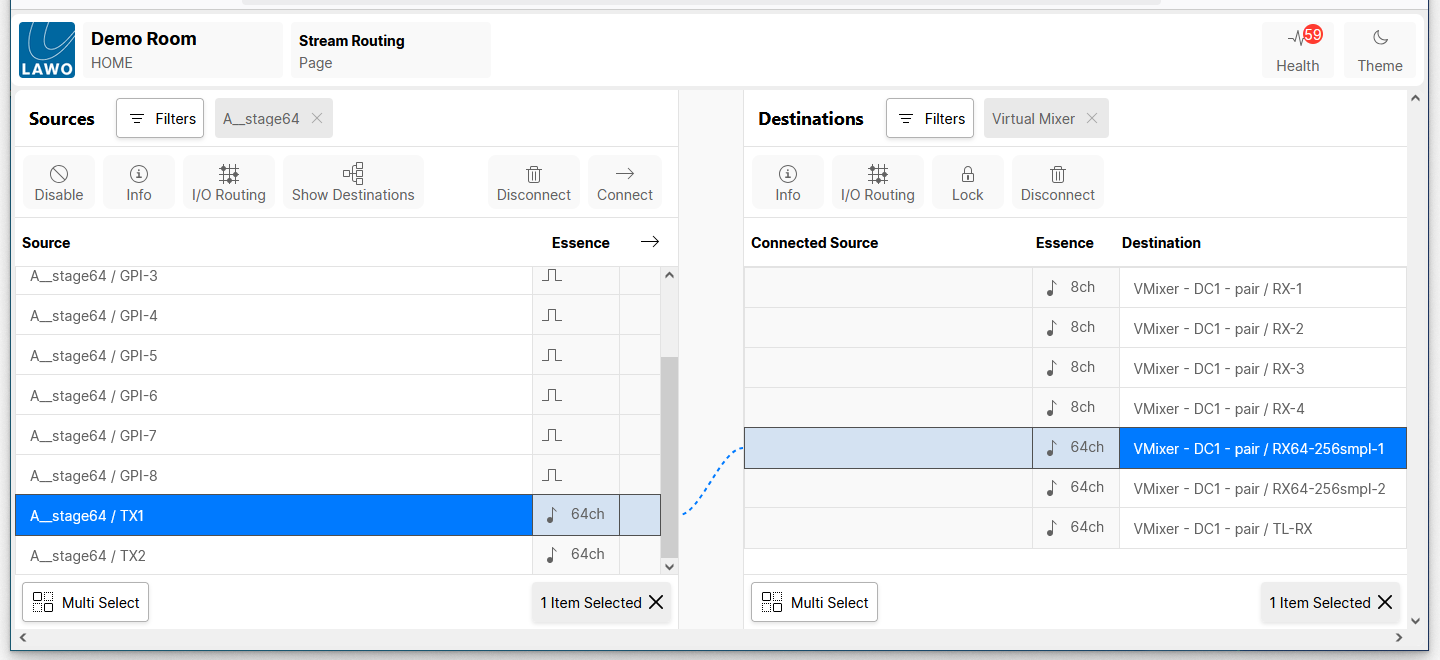
Then, click Connect - the dotted (preview) line changes to a solid line and the "Connected Source" field updates.
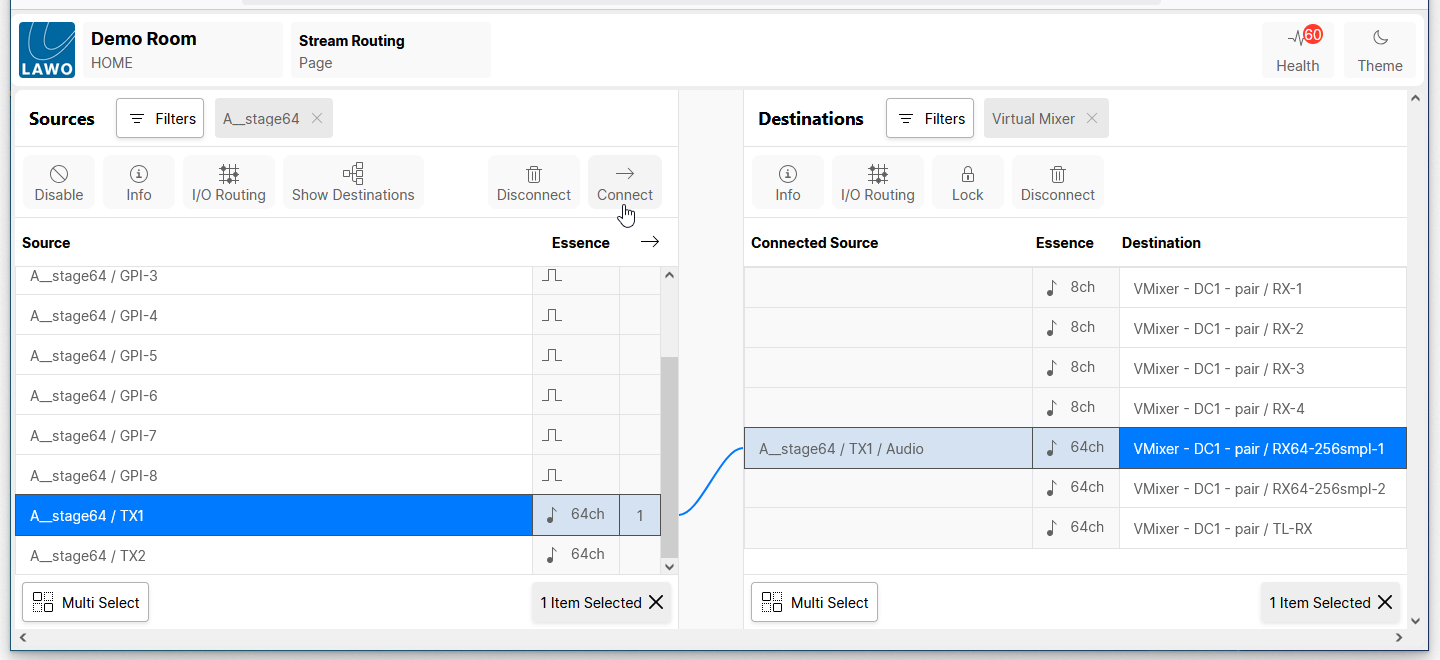
Please note: If the dotted (preview) line is orange, then this warns you that there is a mismatch between the sender and receiver. For example, if the source contains Video, Audio and Metadata but the destination has Video only. In this instance, a connection is still possible but only for the matching flow(s).
Using Disconnect
To remove a connection, select either a source or destination and click Disconnect.
- If you disconnect a source, then all of its connections are removed and the "source used" field clears.
- If you disconnect a destination, then only the one connection is removed and the "Connected Source" field clears.
Connecting Multiple Senders to Multiple Receivers
You can select multiple sources and destinations in one of two ways: press and hold SHIFT or CTRL (on your keyboard) or turn on Multi Select (at the bottom of the page). This makes it easy to connect or disconnect multiple streams in one operation.
Follow the same steps as before, but press and hold SHIFT to select a range. Once a range is selected, press and hold SHIFT to increase (or decrease) the selected range. Alternatively, press and hold CTRL or turn on Multi Select to select (or deselect) individual streams.
When you click Connect (or Disconnect), the assignments are made in one operation. For example, to connect four senders to four receivers.
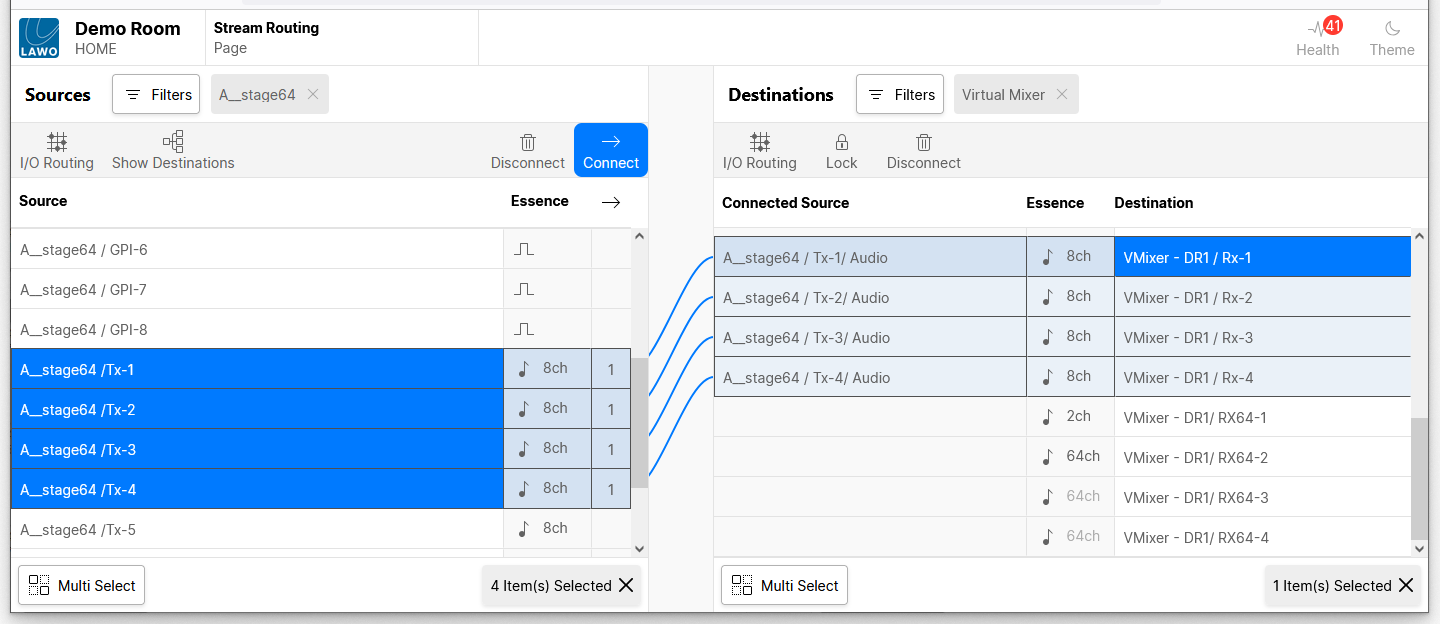
If there is a mismatch between the number of selected sources and destinations, then the sources are assigned consecutively to the available destinations. The exception is for a single source and multiple destinations: in this instance, the source is connected to all selected destinations (as shown below).
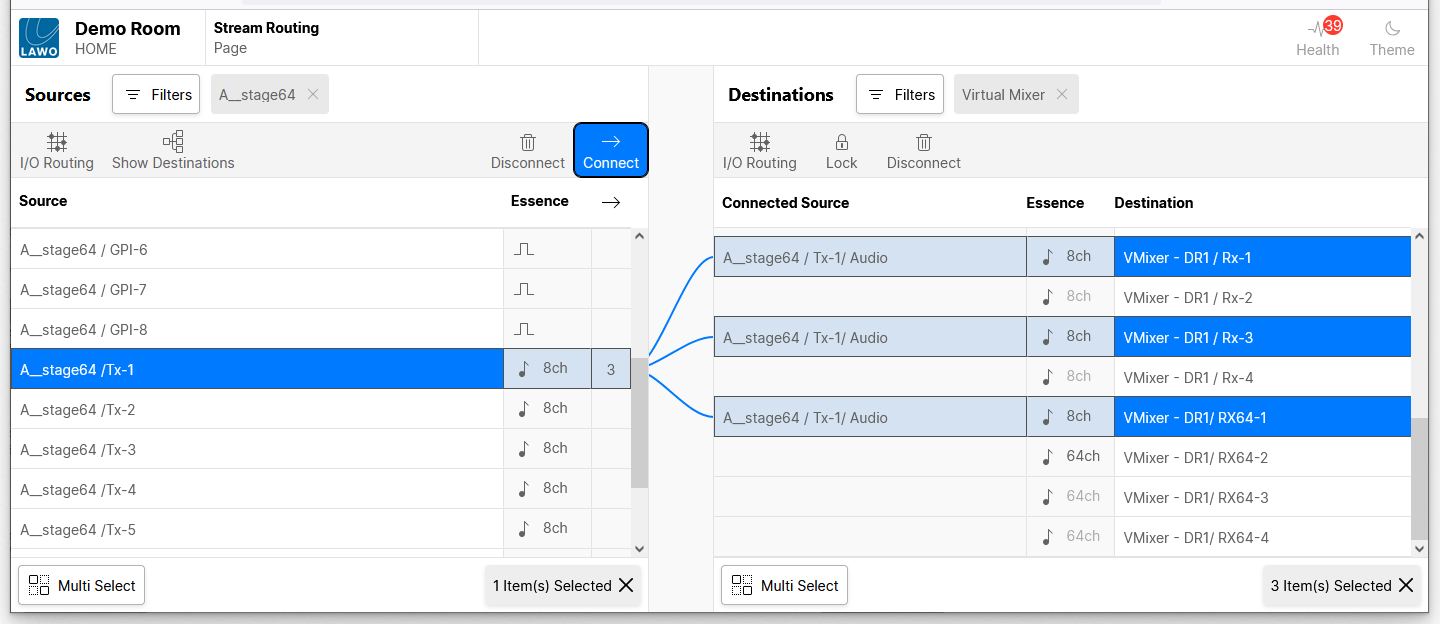
Connecting Individual Flows
If a source or destination handles more than one flow, then they can be treated independently as follows.
- Click on the arrow (beside the stream labels) to reveal the flows.
- Then edit the connection(s).
In the example below, Multiviewer2 / RX 2 is connected from .edge Studio / SdiIn 21: Video, Audio 1 and Metadata.
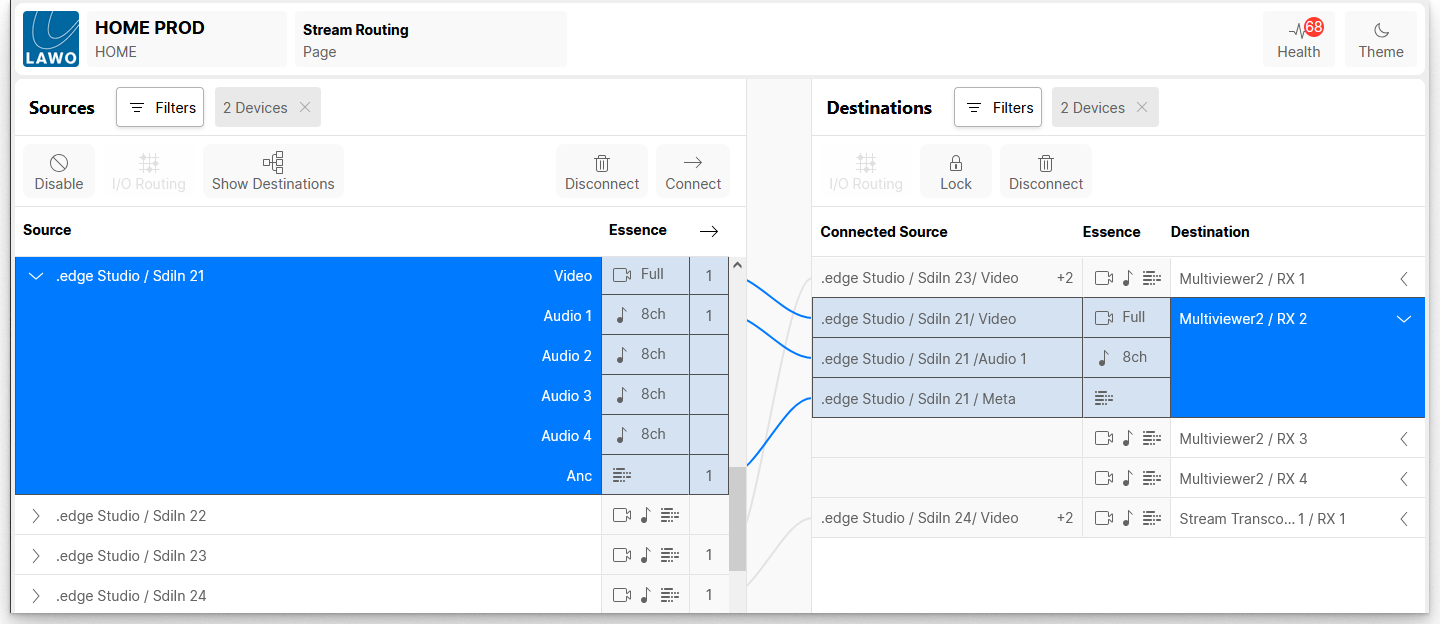
The screenshot below is taken after the audio stream is replaced by an 8-channel audio stream from the A__stage64.
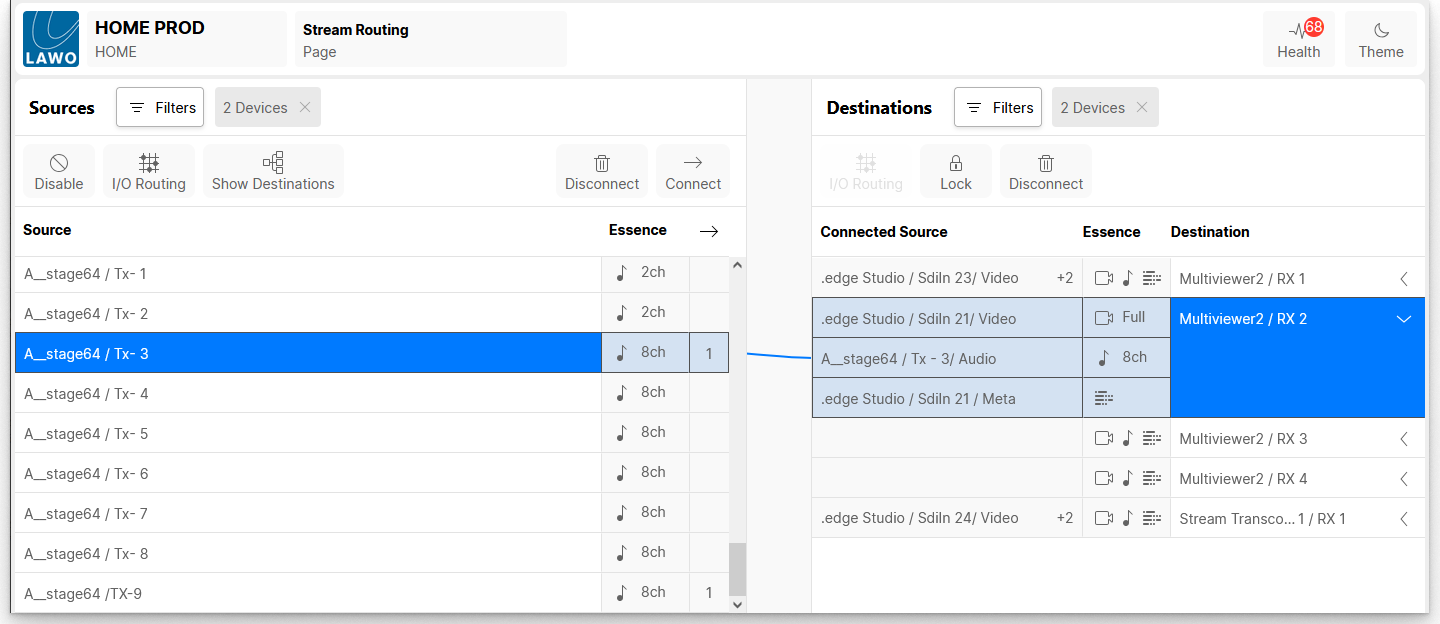
Interrogate a Sender
If a sender is connected, then it can be interrogated as follows.
1. Select a source and click on Show Destinations.
The view updates to show only the destinations of the selected source (or sources).
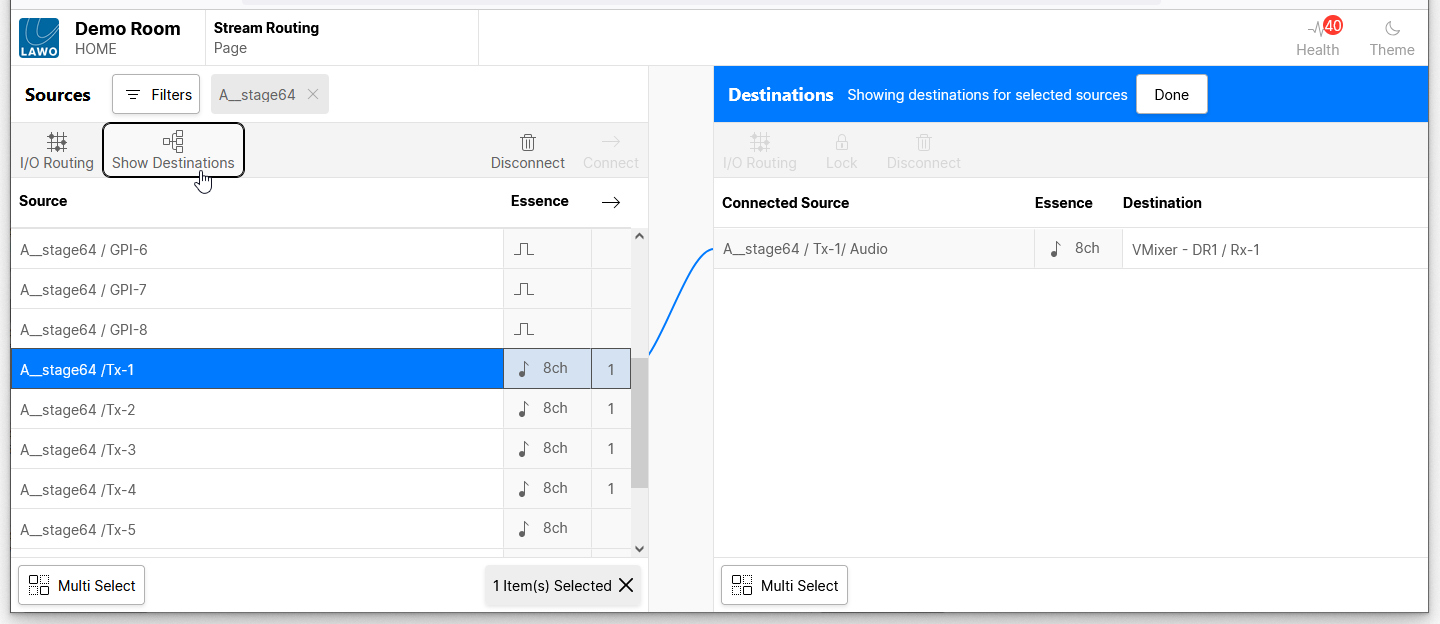
Tip: You can select a different source, or use SHIFT or CTRL to select multiple sources, while Show Destinations is active.
2. Click on Done to exit the "Show Destinations" view and return to the list of all sources and destinations.
Open the I/O Routing
For convenience, it is possible to open the I/O Routing page for an audio sender or receiver. This allows you to map the stream's IP channels to the device I/Os, and vice versa.
- Select a sender (or receiver) and click on I/O Routing.
- The "Routing" window opens. The operation is described here.
Note that the I/O Routing button is not available if you select more than one sender or receiver.